Data Science and Machine Learning Internship ...
- 22k Enrolled Learners
- Weekend/Weekday
- Live Class
Machine Learning. Something that almost all of us around the world have heard of but do not know how it really works. Do you wanna know how Machine Learning does its magic? What are the different types of Machine Learning? Do you know what is Supervised Learning? If not, let me answer those questions for you through this article.
The article has been divided into the following parts:
So get ready to dirty your hands with all there is to know about Supervised Learning. Let’s get started :)
So for all those of you who do not know what is Machine Learning? Machine Learning, in the simplest of terms, is teaching your machine about something. You collect data, clean the data, create algorithms, teach the algorithm essential patterns from the data and then expect the algorithm to give you a helpful answer. If the algorithm lives up to your expectations, you have successfully taught your algorithm. If not, just scrap everything and start from scratch. That is how it works here. Oh, and if you are looking for a formal definition, Machine Learning is the process of creating models that can perform a certain task without the need for a human explicitly programming it to do something.
There are 3 types of Machine Learning which are based on the way the algorithms are created. They are:
Now that you have a basic idea of what is Machine Learning and the different types of Machine Learning, let us dwell into the actual topic for discussion here and answer What is Supervised Learning? Where is Supervised Learning used? What are the types of Supervised Learning? Supervised Learning Algorithms and much more!
Supervised Learning is the process of making an algorithm to learn to map an input to a particular output. This is achieved using the labelled datasets that you have collected. If the mapping is correct, the algorithm has successfully learned. Else, you make the necessary changes to the algorithm so that it can learn correctly. Supervised Learning algorithms can help make predictions for new unseen data that we obtain later in the future.
This is similar to a teacher-student scenario. There is a teacher who guides the student to learn from books and other materials. The student is then tested and if correct, the student passes. Else, the teacher tunes the student and makes the student learn from the mistakes that he or she had made in the past. That is the basic principle of Supervised Learning.
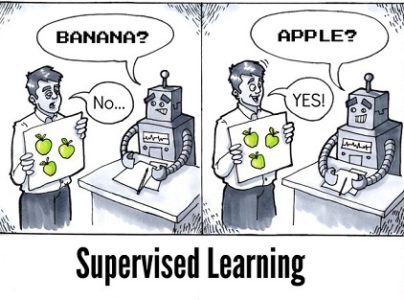 Let me give another real-life example that can help you understand what exactly is Supervised Learning.
Let me give another real-life example that can help you understand what exactly is Supervised Learning.
Example of Supervised Learning
Suppose you have a niece who has just turned 2 years old and is learning to speak. She knows the words, Papa and Mumma, as her parents have taught her how she needs to call them. You want to teach her what a dog and a cat is. So what do you do? You either show her videos of dogs and cats or you bring a dog and a cat and show them to her in real-life so that she can understand how they are different.
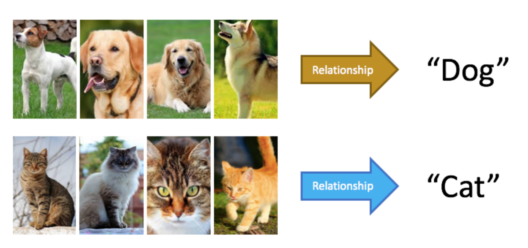 Now there are certain things you tell her so that she understands the differences between the 2 animals.
Now there are certain things you tell her so that she understands the differences between the 2 animals.
Now you take your niece back home and show her pictures of different dogs and cats. If she is able to differentiate between the dog and cat, you have successfully taught her.
So what happened here? You were there to guide her to the goal of differentiating between a dog and a cat. You taught her every difference there is between a dog and a cat. You then tested her if she was able to learn. If she was able to learn, she called the dog as a dog and a cat as a cat. If not, you taught her more and were able to teach her. You acted as the supervisor and your niece acted as the algorithm that had to learn. You even knew what was a dog and what was a cat. Making sure that she was learning the correct thing. That is the principle that Supervised Learning follows.
Now with having a basic understanding of what Supervised Learning is, let’s also understand what makes this kind of learning important.
With the importance of Supervised Learning understood, let’s take a look at the types of Supervised Learning along with the algorithms!
Supervised Learning has been broadly classified into 2 types.
Regression is the kind of Supervised Learning that learns from the Labelled Datasets and is then able to predict a continuous-valued output for the new data given to the algorithm. It is used whenever the output required is a number such as money or height etc. Some popular Supervised Learning algorithms are discussed below:
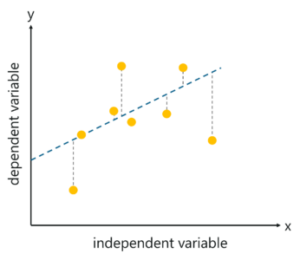
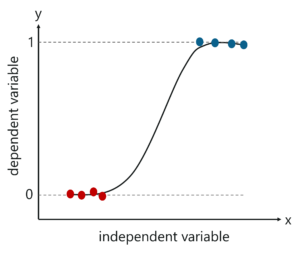
Classification, on the other hand, is the kind of learning where the algorithm needs to map the new data that is obtained to any one of the 2 classes that we have in our dataset. The classes need to be mapped to either 1 or 0 which in real-life translated to ‘Yes’ or ‘No’, ‘Rains’ or ‘Does Not Rain’ and so forth. The output will be either one of the classes and not a number as it was in Regression. Some of the most well-known algorithms are discussed below:
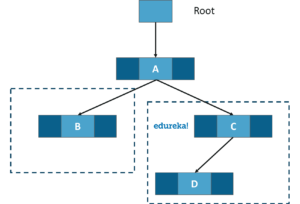
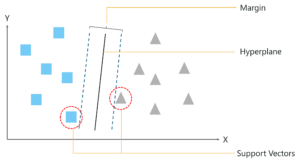
So, I hope you have a clear understanding of the 2 types of Supervised Learning and a few of the most popular algorithms in them. Let’s move over to its applications.
Applications of Supervised Learning
Supervised Learning Algorithms are used in a variety of applications. Let’s go through some of the most well-known applications.
Those were some of the places where Supervised Learning has shined and shown its grit in the real world of today. With that, let us move over to the differences between Supervised and Unsupervised learning.
| Parameter | Supervised Learning | Unsupervised Learning |
| Dataset | Labelled | Unlabelled |
| Method of Learning | Guided learning | The algorithm learns by itself using dataset |
| Complexity | Simpler method | Computationally complex |
| Accuracy | More Accurate | Less Accurate |
Supervised Learning has a lot of challenges and disadvantages that you could face while working with these algorithms. Let’s take a look at these.
So now that we have finished all the disadvantages, let’s retrace back and summarize what we have learnt today.
We had an overview of what Machine Learning is and its various types. We then understood in depth of what supervised learning is, why is it so important. Later, we went through the various types of supervised Learning which are regression and classification. After that, we discussed the various algorithms, the applications of supervised Learning, differences between Supervised and Unsupervised Learning and the disadvantages that you may face when you work with supervised Learning Algorithms.
That brings us to the end of the article. I hope it has helped you understand what supervised Learning is in a clear and precise manner. Till next time, Happy Learning!
Now that you know about Supervised Learning, check out the Machine Learning Engineer Masters Program by Edureka, a trusted online learning company with a network of more than 250,000 satisfied learners spread across the globe.
Edureka’s Machine Learning Engineer Masters Program course is designed for students and professionals who want to be a Machine Learning Engineer. The course is designed to make you proficient in techniques like Supervised Learning, Unsupervised Learning, and Natural Language Processing. It includes training on the latest advancements and technical approaches in Artificial Intelligence & Machine Learning such as Deep Learning, Graphical Models and Reinforcement Learning.
Got a question for us? Please mention it in the comments section of this “What is Supervised Learning and How does it Work?” blog and we will get back to you as soon as possible.
 Thank you for registering Join Edureka Meetup community for 100+ Free Webinars each month JOIN MEETUP GROUP
Thank you for registering Join Edureka Meetup community for 100+ Free Webinars each month JOIN MEETUP GROUPedureka.co